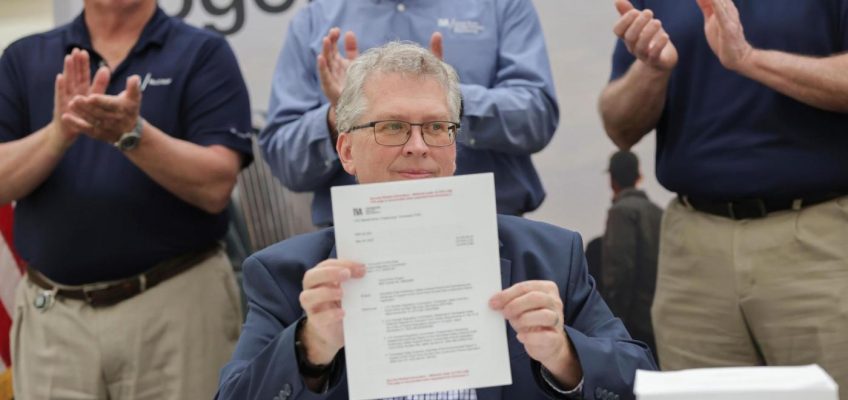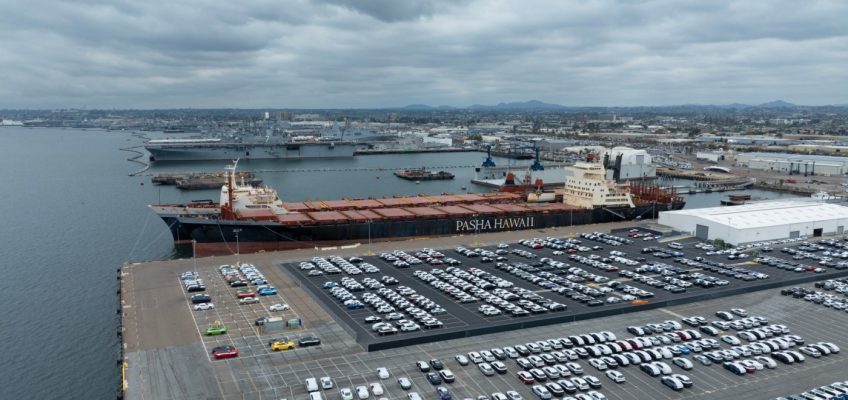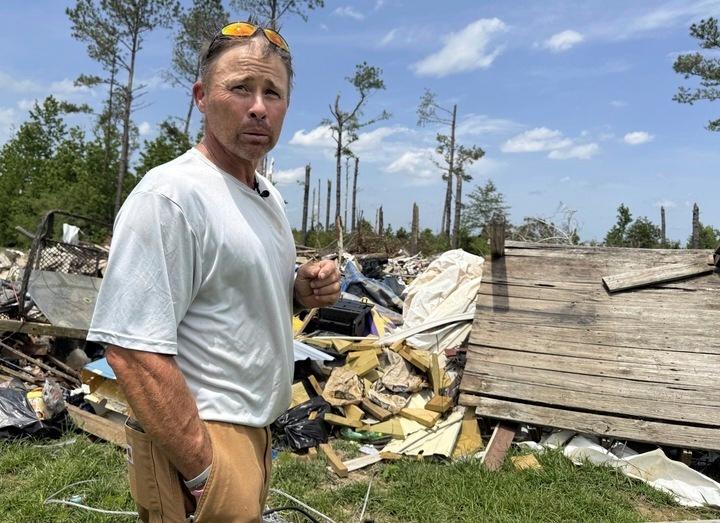By JENNIFER McDERMOTT, Associated Press
For the first time in the United States, a utility is asking federal regulators for a permit to build a small nuclear reactor.
The nation’s largest public power company, the Tennessee Valley Authority, announced Tuesday it submitted a construction permit application to the U.S. Nuclear Regulatory Commission for a small, modular nuclear reactor. It wants to develop next-generation nuclear power in Oak Ridge, Tennessee, at its Clinch River site.
TVA President and CEO Don Moul said that by going first, they can show other utilities a way to accelerate the development of small nuclear reactors.
“Nuclear is very reliable, very resilient. It is carbon free,” he told The Associated Press in an exclusive interview Monday. “It is, what I would consider, one of the highest quality generating sources we have. And so starting a path forward not only helps others in America follow, but it can also help America lead the world in the new technology.”
The federally owned utility provides electricity to seven states and operates three traditional, large nuclear power plants, which provide 40% of the Tennessee Valley’s power. The region’s population is growing, industries are replacing fossil fuels with electric alternatives and there’s more manufacturing. The TVA is planning for the demand for electricity to increase by up to 26 gigawatts by 2035, which is enough to power roughly 15 million homes.
Its board launched a program in 2022 to develop and fund small modular nuclear reactors as part of its strategy to dramatically reduce planet-warming greenhouse gas emissions, and has provided $350 million for it so far.
U.S. electric utilities have been reluctant to invest in new nuclear construction because of large cost overruns and delays in Georgia, as Georgia Power Co.’s Plant Vogtle was expanded from two of the traditional large reactors to four, said Jacopo Buongiorno, professor of nuclear science and engineering at the Massachusetts Institute of Technology. The TVA decision is meaningful because it may be the start of a trend, Buongiorno added.
The United States does not have any next-generation reactors operating commercially. The NRC is currently reviewing applications from companies that want to build these reactors to begin providing power in the early 2030s. A project to build the first was terminated in 2023, as costs increased and not enough local power providers signed up to be part of it.
This month, the power company in Ontario, Canada, began building the first of four small nuclear reactors. Ontario Power Generation chose the same reactor the TVA wants to build, GE Hitachi’s design for a small modular reactor that uses light water like all large U.S. commercial reactors.
In Ontario, they’re expecting the first to cost $6.1 billion, along with $1.6 billion for equipment to build all four. The cost is expected to decline with each subsequent reactor. TVA’s cost estimates are in the same range, Moul said, but he declined to give specifics and said the utility is looking for partners to help with the initial costs.
The nonprofit Environmental Working Group says far cheaper, safer and cleaner electricity can be delivered much faster through investments in proven renewable sources like solar rooftops, battery storage and wind power. There’s “no bigger example of a money pit than the fantasy of small modular reactors” as a viable source of energy in the U.S., said Alex Formuzis, spokesperson for the research and advocacy organization.
The Biden administration announced a $900 million investment in these reactors last year. The Trump administration also supports building small modular reactors for flexible, reliable power for energy-intensive sectors like industry and data centers as electricity demand soars. Energy Secretary Chris Wright said in March that the $900 million would be awarded, but applicants had to submit new proposals to be judged solely on technical merit, without consideration for past diversity, equity and inclusion practices.
The TVA and its industry partners applied for $800 million in federal funding, which they say will help speed up the development of the technology by about two years.
The NRC has already said the Clinch River site is suitable for a new nuclear plant. There’s enough room for a total of four small reactors. If the NRC and the TVA board approve the plans to build the first reactor there, it could begin operating around 2032, providing 300 megawatts of power, which is enough for about 175,000 homes.
The Associated Press’ climate and environmental coverage receives financial support from multiple private foundations. AP is solely responsible for all content. Find AP’s standards for working with philanthropies, a list of supporters and funded coverage areas at AP.org.




